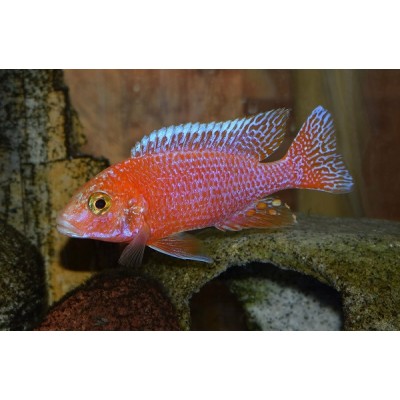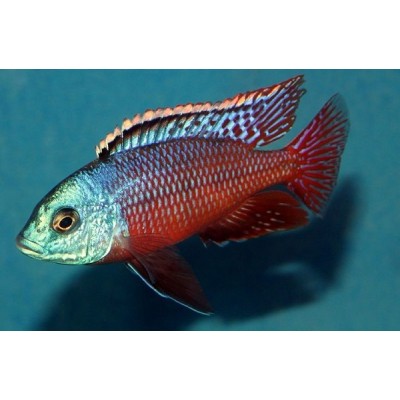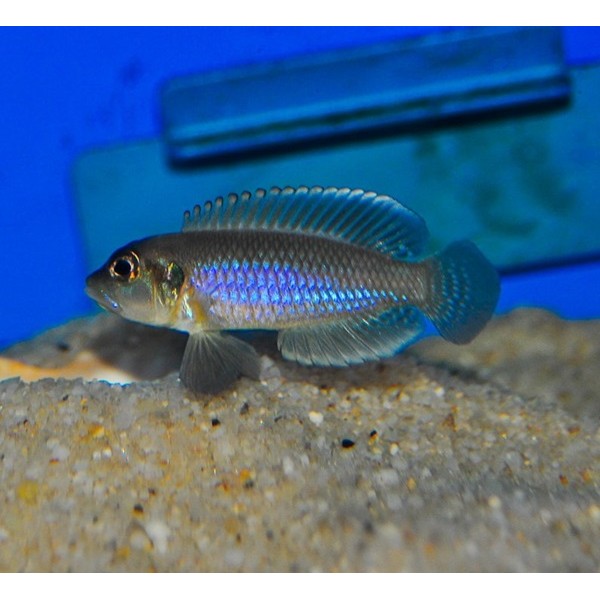
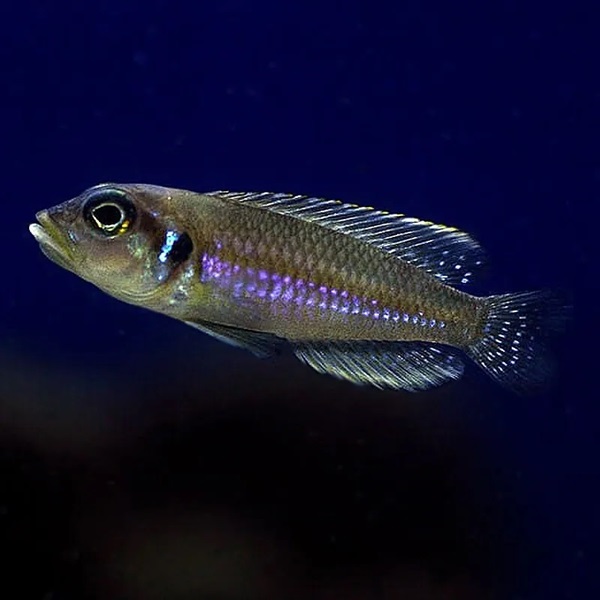


Blue Occie Shell Dweller
Lamprologus ocellatus Blue, also known as the Blue Ocellatus Cichlid, holds a special place in the hearts of aquarium enthusiasts. This captivating fish, with its striking appearance and manageable size, is a popular choice. Let’s dive into a comprehensive and easily digestible overview:
Appearance: First and foremost, these cichlids are tiny, reaching only 2-3 inches (5-7.5 cm) in length when fully grown. What sets them apart is their standout feature – captivating blue coloration, especially on their fins and body. As a result, they are truly eye-catching.
Habitat: Originating from Lake Tanganyika in West Africa, they’re naturally accustomed to rocky shorelines and sandy substrates. Therefore, when setting up their tank, it’s crucial to replicate this environment, including plenty of rocks and caves.
Tank Size: For a small group of these cichlids, a 20-gallon tank should suffice. By providing ample space, they can establish territories without overcrowding, ensuring their well-being.
Water Parameters: To maintain their well-being, it’s imperative to adhere to specific parameters:
- Temperature: Keep the water between 75-82°F (24-28°C).
- pH: Aim for a pH level between 7.8 and 8.6.
- Water Hardness: Maintain water hardness in the 10-20 dKH range.
Tank Setup: To mimic their natural habitat, it’s advisable to use a sandy substrate and incorporate rocks and caves. These features not only offer secure territories but also provide hiding spots, promoting their overall comfort.
Diet: Being omnivores, these cichlids appreciate variety in their diet. Feeding them high-quality pellets, flakes, live or frozen foods like brine shrimp, and occasionally some plant matter will keep them happy and healthy.
Behavior: These cichlids are known for their interesting behaviors, such as digging and sifting substrate. While they are generally peaceful with similar-sized and tempered fish, it’s worth noting that they can become territorial, particularly during breeding.
Breeding: In terms of breeding, they are substrate spawners. The females lay eggs in caves or crevices, with the females guarding the eggs and fry while the males dutifully protect the territory.
Compatibility: While they can coexist with other Tanganyikan cichlids that share similar water needs, it’s important to avoid overly aggressive or significantly larger tankmates.
Coloration: Lastly, their most captivating trait is their vibrant blue coloration. By providing proper care and maintaining suitable water conditions, you can ensure these stunning colors are preserved.
In conclusion, the Lamprologus ocellatus Blue is an attractive and manageable fish that holds great appeal for aquarium enthusiasts. Their small size, striking appearance, and intriguing behavior make them an excellent addition to freshwater tanks. Observing these cichlids up close provides a unique opportunity to appreciate their captivating beauty.
Lamprologus ocellatus Blue, also known as the Blue Ocellatus Cichlid, holds a special place in the hearts of aquarium enthusiasts. This captivating fish, with its striking appearance and manageable size, is a popular choice. Let’s dive into a comprehensive and easily digestible overview:
Appearance: First and foremost, these cichlids are tiny, reaching only 2-3 inches (5-7.5 cm) in length when fully grown. What sets them apart is their standout feature – captivating blue coloration, especially on their fins and body. As a result, they are truly eye-catching.
Habitat: Originating from Lake Tanganyika in West Africa, they’re naturally accustomed to rocky shorelines and sandy substrates. Therefore, when setting up their tank, it’s crucial to replicate this environment, including plenty of rocks and caves.
Tank Size: For a small group of these cichlids, a 20-gallon tank should suffice. By providing ample space, they can establish territories without overcrowding, ensuring their well-being.
Water Parameters: To maintain their well-being, it’s imperative to adhere to specific parameters:
- Temperature: Keep the water between 75-82°F (24-28°C).
- pH: Aim for a pH level between 7.8 and 8.6.
- Water Hardness: Maintain water hardness in the 10-20 dKH range.
Tank Setup: To mimic their natural habitat, it’s advisable to use a sandy substrate and incorporate rocks and caves. These features not only offer secure territories but also provide hiding spots, promoting their overall comfort.
Diet: Being omnivores, these cichlids appreciate variety in their diet. Feeding them high-quality pellets, flakes, live or frozen foods like brine shrimp, and occasionally some plant matter will keep them happy and healthy.
Behavior: These cichlids are known for their interesting behaviors, such as digging and sifting substrate. While they are generally peaceful with similar-sized and tempered fish, it’s worth noting that they can become territorial, particularly during breeding.
Breeding: In terms of breeding, they are substrate spawners. The females lay eggs in caves or crevices, with the females guarding the eggs and fry while the males dutifully protect the territory.
Compatibility: While they can coexist with other Tanganyikan cichlids that share similar water needs, it’s important to avoid overly aggressive or significantly larger tankmates.
Coloration: Lastly, their most captivating trait is their vibrant blue coloration. By providing proper care and maintaining suitable water conditions, you can ensure these stunning colors are preserved.
In conclusion, the Lamprologus ocellatus Blue is an attractive and manageable fish that holds great appeal for aquarium enthusiasts. Their small size, striking appearance, and intriguing behavior make them an excellent addition to freshwater tanks. Observing these cichlids up close provides a unique opportunity to appreciate their captivating beauty.
- Species: Lamprologus Ornatipinnis “Blue”
- Common Name: Ornate Shell Dweller
- Origin: Lake Tanganyika in Africa
- Diet: Carnivore
- pH Range: 7.8 – 9
- Temperature: Tropical, 26°C – 27°C
- Breed Type: Egg Layer
- Maximum Size: Approximately 4cm
- Stock: 9
- Model: OCELLATUS BLUE
- SKU: IMPORTED F2




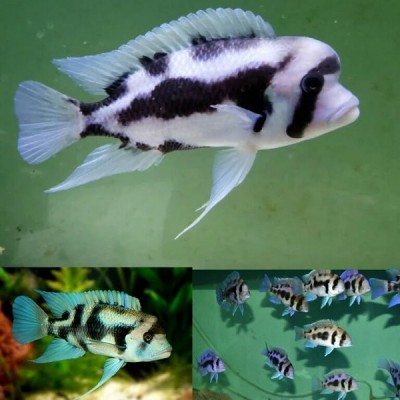
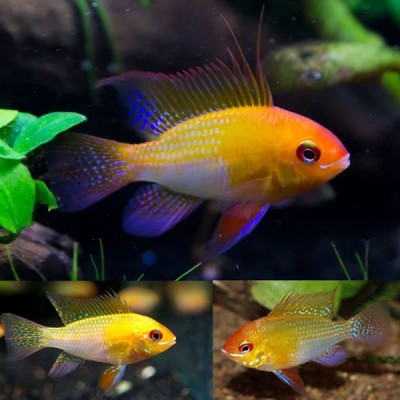
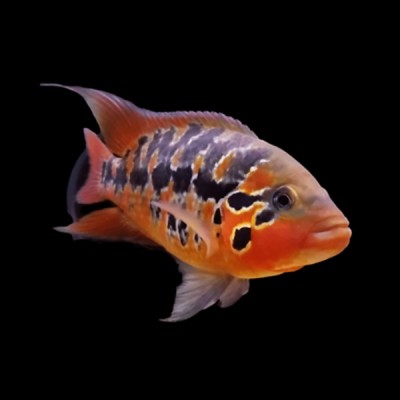
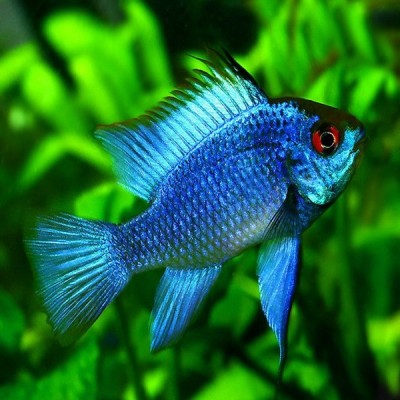

-400x400.jpg)

